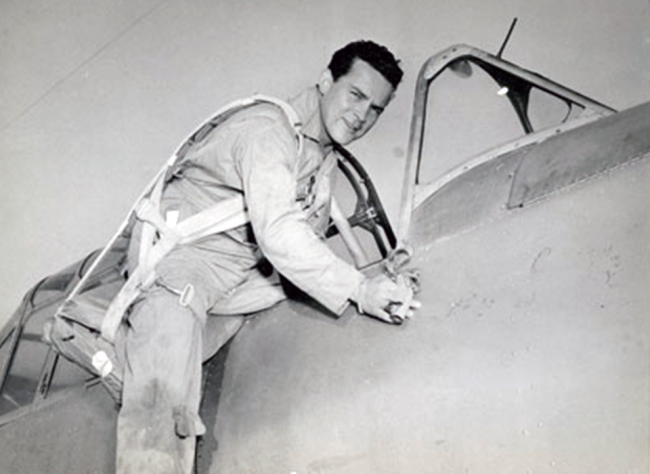The Curator’s Choice series usually focuses on highlighted artifacts, however, in honor of St. Patrick’s Day I have decided to focus on a symbol that makes a regular appearance in our collection—the shamrock. The three leafed clover, commonly associated with everything Irish from the top hat of the mystical Leprechaun to the more serious teachings of St. Patrick, has made its presence known throughout American military history. One of the many ethnic groups that make up the United States, the Irish have made their mark since the signing of the Declaration of Independence by Charles Carroll, to the 35th President of the United States, John F. Kennedy. Between 1820 and 1930, it is estimated that over 4 million Irish came to the United States. This proud group of countrymen and women sought a better life, making their mark on American society to the point that there is now a day that everyone can be Irish: St. Patrick’s Day. Because of their influence, a symbol of Ireland has naturally worked its way into many items within our collection. The shamrock holds honor as a common symbol in military heraldry, a sign of faith, and perhaps most importantly for the average GI and sailor—it was seen as a symbol of luck.
Throughout American military history, there have been countless O’Brians, O’Kanes, Higgins, and Sullivans in muster rolls and morning reports. Much of the American military esteem associated with Irish combat units began during the American Civil War when regiments composed of Irish, adorned with clover and marching under emerald banners, sallied forth in many major engagements over the four-year war. Though many Irish units and individuals served during the Civil War, perhaps the most famous is the Irish Brigade. Made up of five regiments from New York, Massachusetts, and Pennsylvania, the Irish Brigade fought with distinction at Fredericksburg, Chancellorsville, Gettysburg, and Cold Harbor, just to name a few. Of these units that were originally “Irish” only one remained active during World War II, the 69th New York Volunteer Infantry, which by the time it landed at Makin Atoll in November 1943 had been re-designated as the 165th Infantry Regiment of the 27th Infantry Division. Still inspired by the battle cry “Faugh A Ballagh”—clear the way!, the fighting 69th served with distinction on Makin, Saipan, and Okinawa. Though these units had few Irish in them, they still carried their influence through the presence of a shamrock on their unit crest.
Shamrock comes from the Gaelic seamrog, which means little clover. This little clover has had a long history with Ireland, however, most of its modern history and identity is associated with the fifth century work of St. Patrick. Patrick was one of the first Catholic missionaries to Ireland and legend has it that he used the common clover and its three leaves to teach the holy trinity by representing the Father, Son, and Holy Spirit as being separate, but connected as one. Because of its roots in Irish Christian faith, the shamrock has always been seen as a religious symbol and sign of hope, faith, and love. Because of its mercy based association, it was not uncommon to see its name and form used—most notably in our collection is material from the USAHS Shamrock—an army operated hospital ship that served in the Mediterranean theater where the ship transported over 15,000 wounded soldiers.
USAHS Shamrock in 1943. During service in the Mediterranean Theater the USAHS Shamrock transported and treated over 15,000 wounded. Courtesy of the US Naval History and Heritage Command.
For the average GI, sailor, Marine, and airman, the most common and important service a clover could provide was luck. Irish or not, in times of war everyone wants to make sure luck is on their side. For this reason, the four-leaf clover makes an almost constant appearance in nose art and in the pockets of Americans overseas. The four-leaf clovers are a variant of the common clover plant. The chances of their happening are about 10,000:1, and in their rarity lies their supposed luck. If you are able to locate one it is best to preserve it, if you do not have one, paint it or acquire a facsimile. Servicemen were always after their lucky charms in the frightening environment of war and untold thousands were likely comforted by the four-leaf clover they kept with them, the “luck of the Irish.”
-
![B-17 [41-24488]](/themes/nwwiim/images/loaders/placeholder.gif)
Shamrock nose art of B-17 [41-24488] from the 369th Bombardment Squadron, 306th Bombardment Group. Gift of Helen Haynes in Memory of Wyndom S. Haynes 2010.545.260.
-

Four-leaf clover lucky charm of Pfc. Joseph Robert Wallner. Attached to a .45 caliber bullet, Waller carried this clover during his service in the 18th Defense Battalion, USMC. Gift of Sonja Wallner, 2012.034.029.
No doubt the most influence Ireland has had on our collection are the names of the men and women that served. From the most notable like Audie Murphy, or the great businessmen like Andrew Higgins, to the regular Americans of Irish descent who served in all branches, their legacy is their service and name. But the nature of a collection is physical objects, and in this case one of the first indications of Irish heritage is the clover.
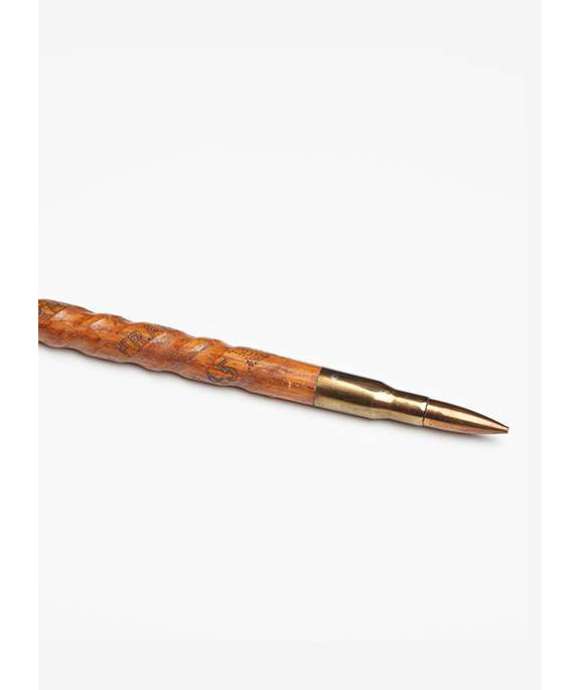
Curator’s Choice: Swagger Stick Trench Art
The story of a swagger stick presented to T/3 John Sweitzer by his German prisoners.
Joshua Schick
Cite this article:
MLA Citation:
APA Citation:
Chicago Style Citation:
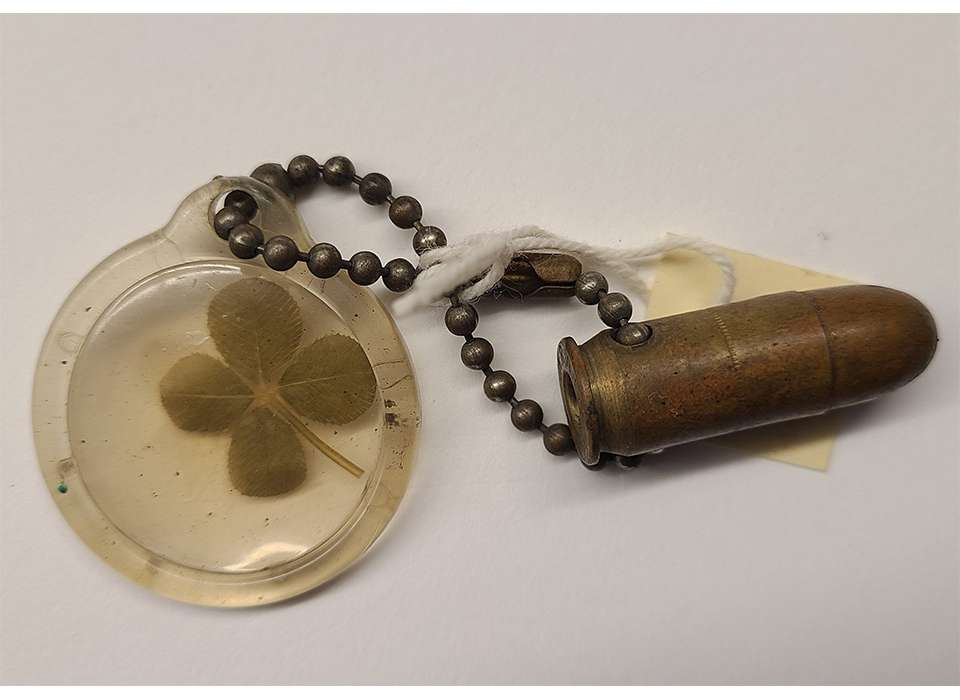
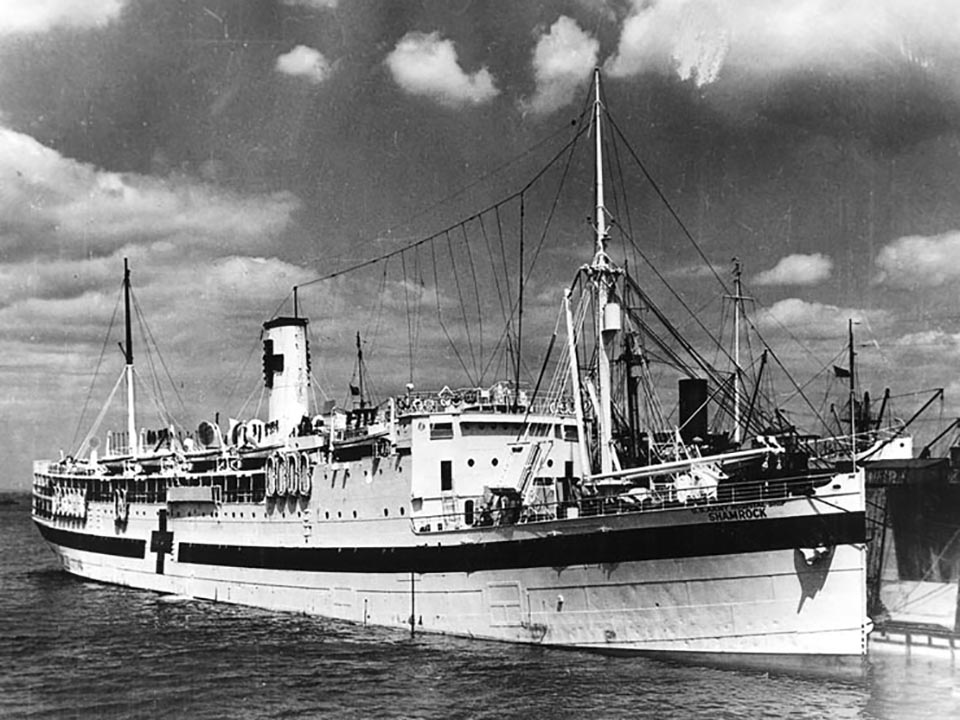
![B-17 [41-24488]](/sites/default/files/styles/wide_large/public/2021-03/Photo%202-3_0.jpg?h=dec22bcf)
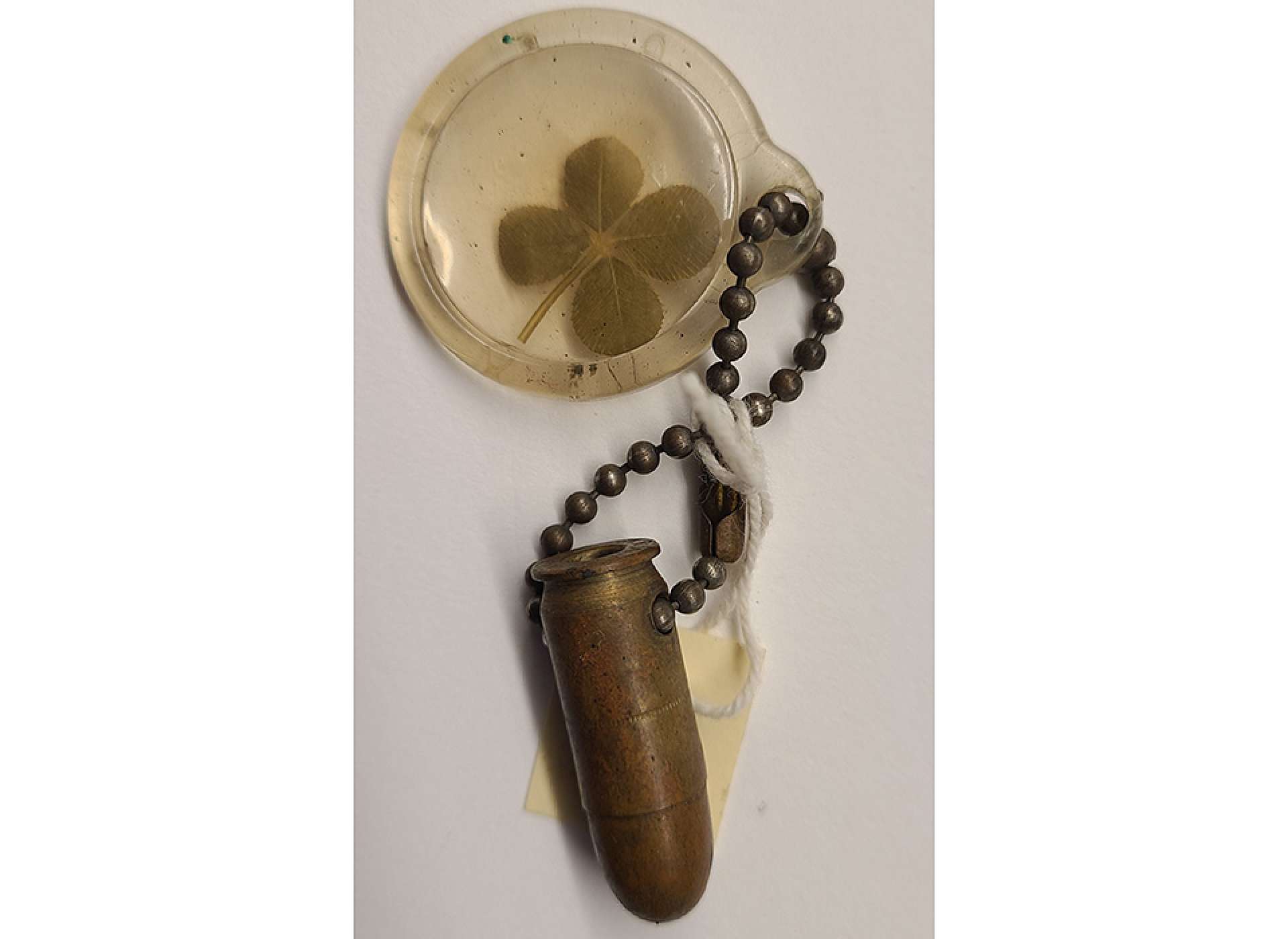


![Max Fuchs, New York City cantor, sings as Rabbi Sydney [sic] Lefkowitz, Richmond, VA, conducts the first Jewish services from Germany.](/sites/default/files/styles/max_650x650/public/2025-10/image1.jpg)





